
Welcome to your comprehensive guide for calibrating a Tono Pen Medtronic. Calibration is the key to keeping your Tono Pen functioning perfectly and delivering accurate measurements every time. Whether you’re a seasoned professional or a newcomer to the world of ophthalmology, this straightforward guide will break down the steps in a manner that is easy to understand and follow.
Remember, a properly calibrated Tono Pen Medtronic enhances the accuracy of your readings and ensures optimal eye care for your patients. Regular calibration is not just recommended – it’s necessary for top-notch patient care.
We will methodically walk you through each phase of the process, from preparing your device to performing the calibration, and even some troubleshooting tips if things don’t go as planned. No need to feel overwhelmed – we’ve got your back every step of the way.
As a starting point, let’s delve into the pivotal preparatory steps that set the stage for successful calibration of your Tono Pen Medtronic. Ensuring the cleanliness of your Tono Pen is paramount to its optimal functionality. The lens, as well as the entire device, should be kept immaculately clean, free of any residues or dust particles. This is not just for the aesthetic appeal but rather to prevent any unnecessary interference during the calibration and usage processes.
Next on your checklist should be the replacement of the Ocu-Film + Tip Cover. This seemingly negligible step is, in fact, an imperative one. The tip cover, a vital aspect of the device, is in direct contact with the patient’s eye during each examination. Therefore, using a fresh tip cover for every patient is a non-negotiable standard of practice. It ensures unparalleled hygiene, maintains the integrity of the device and guarantees comparable and reliable results every time the device is used.
These little details may seem like trivial tasks in the grand scheme of device maintenance, but they lay the groundwork for preserving the longevity of your Tono Pen Medtronic as well as ensuring its consistent effectiveness. So, make it a point to embrace these measures as integral parts of your pre-calibration routine, paving the way for precise intraocular pressure measurements for your patients.
Now, to dig a little deeper into the world of calibration. This two-step dance begins with an automatic calibration every time you switch on your Tono Pen. Trustworthy, isn’t it? The Tono Pen does half the job for you, maintaining its measurement precision and paving the way for an accurate reading. Thereafter, a manual verification is performed just to make absolutely sure.
Calibrating your Tono Pen Medtronic doesn’t require a rocket science degree, but it warrants care and attentiveness. We’ll start by getting our location right. Here’s some insight: The calibration process works best in a controlled, steady space. Why is this required? Maintaining consistent parameters such as temperature and humidity is pivotal for accuracy. Extreme variations may create inconsistencies in your Tono Pen’s calibration, hampering its preciseness.
Avoid calibrating your device near drafts, beneath a direct sunbeam, or close to vents. Such environments can lead to sudden atmospheric changes affecting the device’s calibration. Think of it as carefully placing your chess pieces on the board in anticipation of an engrossing game. Your calibration practices are indeed a strategic move, working towards satisfactory patient outcomes. Slipping up could spell a faulty reading which we are strategically trying to circumvent.
Why all the fuss over accuracy, you may wonder? As medical practitioners, playing by the book is not just desirous, but vital. Calibration is a necessary ritual that ensures reliable measurements. By prioritizing this crucial aspect, we’re inching towards more precise disease diagnosis and treatment. So, while getting the space right may feel like a menial task, remember its significance in the grand scheme of things. Having that detailed calibration log doesn’t feel like overkill now, does it?
While it might seem small, even the batteries play a pivotal role in this journey. Your Tono Pen Medtronic heavily relies on a fully charged or fresh battery for ensuring its smooth operation. A healthy battery not only ensures accurate calibration, but it also plays a significant role in achieving precise and consistent measurement. It may seem like a minor detail, but a depleted or aging battery can lead to significant inaccuracies in your readings, thus undermining the entire purpose of this sophisticated device.
Given this importance of the battery, it’s only practical to integrate regular battery checks into your daily or weekly routines. Such constant attentiveness to the battery’s health not only aids in maintaining the reliability of your measures, but it also ensures that you’re always ready for quick and accurate readings, even in unplanned, urgent scenarios. It’s not just about using your Tono Pen Medtronic correctly—it’s equally crucial to proactively maintain its key components, like batteries, to ensure its efficiency and longevity.
Calibration can be a challenging task, but with some good old-fashioned discipline, it becomes second nature. Experience speaks volume here; many seasoned practitioners emphasize routine and meticulous calibration practices. They suggest keeping a log with calibration specifics, changing tip covers and batteries regularly, and recalibrating after substantial environmental transitions. And remember, never skip the recommended maintenance steps. They are the secret sauce for a long life and high-quality results for your Tono Pen.
Like with most devices, you might find yourself encountering a few roadblocks here and there while using your Tono Pen Medtronic. But don’t fret! Let’s broach some common issues and how to effectively deal with them.
Failed calibration? Take a breath. It’s typically a minor issue that you can quickly address. Let’s try the process again and carefully watch for any user errors, such as moving the device during calibration or interrupting the sequence prematurely. Also, remember to maintain a controlled environment to curb any external factors that might impede the calibration process.
Changing the battery of your Tono Pen Medtronic is sometimes an overlooked yet crucial part of maintaining the accuracy and reliability of the measurements. Interestingly, once you’ve had a battery replacement, it’s not enough just to pop the new one in and carry on as usual. Once a new battery has been installed, there’s an important step that mustn’t be missed – recalibration.
Like any sensitive medical device, the Tono Pen needs to adjust to any changes in its power supply. Adjusting to a fresh battery is among those necessary adjustments that are often forgotten. Keep in mind, recalibration is not a standard process that you perform after every little change; it’s specifically vital after major alterations, like a new battery. This increases the life of your Tono Pen and maintains its precision.
After recalibration, it’s equally important to perform a performance check. This is an additional assurance that your Tono Pen is delivering excellent and reliable results. Checking the performance includes examining the ease of use, checking for any unusual signs in the display, and most importantly, making sure the readings seem consistent and accurate.
These steps might seem like extra work, but they play a significant role in getting the most accurate and reliable readings from your Tono Pen. So, remember to always recalibrate and run performance checks post a battery change for a smoothly functioning and reliable Tono Pen.
If you notice a high variability in readings, the reasons could range from an unsteady hand to improper patient blinking. Consider taking a brief pause and trying again, ensuring that the patient’s eyelid is gently held open and your hand is firm for the duration of the reading.
Made a big move recently? If your Tono Pen has been subjected to a significant shift in environmental conditions, a recalibration might just be in order. This helps adjust the device to the new climate and maintains its accuracy.
| Environmental Change | Pinpoints Disruption | Action Required |
|---|---|---|
| Temperature Shift | Instrument overheating/cooling | Acclimate Tono Pen to new conditions & Recalibrate |
| Humidity Change | Component corrosion/condensation accumulation | Ensure device dryness & Recalibrate |
| Altitude Variation | Altered pressure readings | Acclimate Tono Pen to new conditions & Recalibrate |
| Storage Condition | Disorder in device’s internal equilibrium | Proper storage & Regular calibration checks |
Relocating your Tono Pen across significant distances, especially changes in altitude, can necessitate recalibration due to altered pressure readings. Similarly, different storage conditions can disrupt the device’s internal equilibrium, impacting its calibration. To cater to these variations, proper storage and regular calibration checks are essential for maintaining the measurement precision of your Tono Pen Medtronic.
Maintaining optimal battery life is critical when it comes to calibrating your Tono Pen Medtronic. To ensure the highest accuracy during calculations, it’s indispensable to power your Tono Pen with a fully charged or completely fresh battery. The vitality of your pen’s power supply can dramatically influence the precision of the measurements reported. Hence, it’s not only recommended but a must-have practice to regularly check the battery life.
A weak or low battery can cause the pen to misbehave, yielding inaccurate or inconsistent results. The calibration process itself can be taxing on the battery, and hence starting with a robust power source is always a strategic move. Also, remember that a sudden battery drain in the middle of a calibration process can interfere with the results, disrupting the entire process, and requiring you to start over. This can be particularly detrimental if you are in the midst of patient examinations.
So, it’s crucial to keep a keen eye on battery levels to prevent any such derailments during the calibration process, especially when you have a string of patients relying on the accuracy of the readings from your Tono Pen Medtronic. Never undermine the importance of a well-charged battery to prevent inaccuracies and ensure seamless calibration.
Lastly, but by no means least, it’s imperative to remember the absolute necessity for periodic professional servicing of your Tono Pen. This is not an optional luxury but a critical part of maintaining your device and ensuring it continues to perform efficiently. Just as you would service your car to keep it running smoothly, your Tono Pen needs the same level of careful attention. Regular professional servicing will help preserve the device’s longevity, keeping it in prime working condition for longer. But that’s not all! Regular check-ups also play a pivotal role in identifying potential issues in their infancy before they escalate. This allows you to rectify these issues in a timely fashion which is crucial to ensure the accurate measurement of intraocular pressure. Remember, a well-maintained Tono Pen is not merely a luxury, it’s an essential tool for averting preventable vision loss in crucial glaucoma management. Don’t underestimate the importance of this key step in your Tono Pen Medtronic usage guide!
The Tono Pen Medtronic is designed to measure intraocular pressure (IOP). Accurate measurement of IOP is vital in the diagnosis and management of conditions like glaucoma that can lead to vision loss if not treated promptly.
During an examination, you should hold the Tono-Pen like a pencil. Apply it lightly onto the cornea to measure intraocular pressure. Remember to be gentle; the eye is a sensitive area, and any heavy-handed usage can potentially damage the probe.
Yes, as a beginner, there are a few practices you can adopt for efficient usage. These include keeping a log with calibration details, changing tip covers and batteries regularly, recalibrating your device after significant environmental changes, and following all maintenance steps diligently.
For each power-on, the Tono Pen undertakes an automatic calibration to ensure accuracy. A manual check should be followed to counter verify. Optimal use of the Tono-Pen requires daily calibration and the usage of disposable latex tip covers following the manufacturer’s guidelines.
Some common errors include not calibrating the device regularly, using worn-out or damaged tip covers, not replacing batteries on time, and being too harsh when applying the Pen to the eye. These can compromise the accuracy of your readings and potentially harm the patient’s eye.
Accurate eye pressure readings are essential in detecting serious eye conditions early and offering timely treatment. To ensure the accuracy of your Tono Pen Medtronic, it becomes vital to adhere to the preparation, calibration, and maintenance protocols. Remember, mistakes can be expensive, both in terms of the device’s lifespan and your patient’s health. But with regular care, calibration, and the correct usage, your Tono Pen can be a dependable ally in your practice’s pursuit of providing superior eye care.
For a better understanding and detailed instructions, don’t forget to visit the manufacturer’s website along with professional resources like www.ikisstc.com. The platform offers an array of references, tips, and active discussions to further enhance your proficiency with the Tono Pen Medtronic.
VISIT OUR SHOP
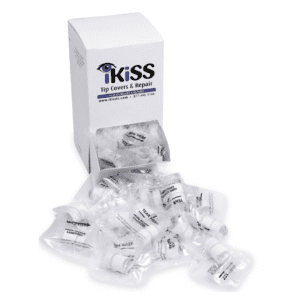
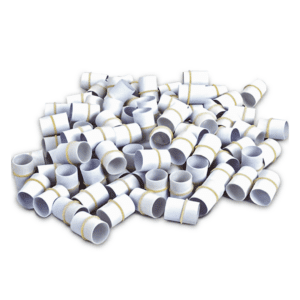
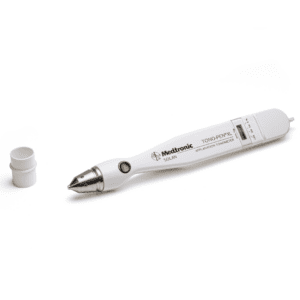
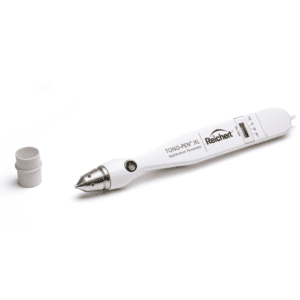
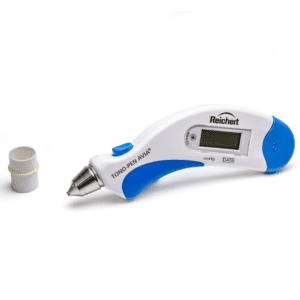
iKiSS is the go-to provider for top-quality refurbished Tono-Pen® Tonometers, Tono-Pen AVIA® Tonometers, Slit Lamps, and Phoropters, offering substantial savings of up to 40%.